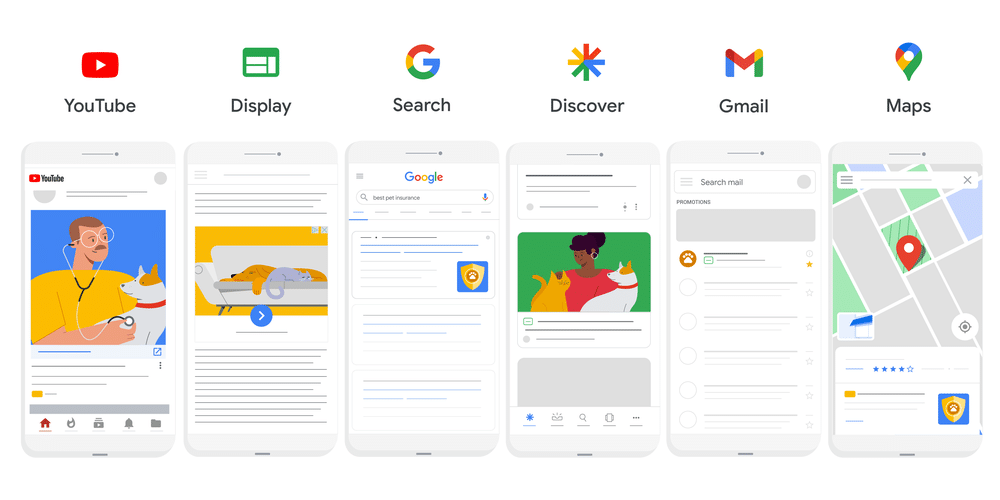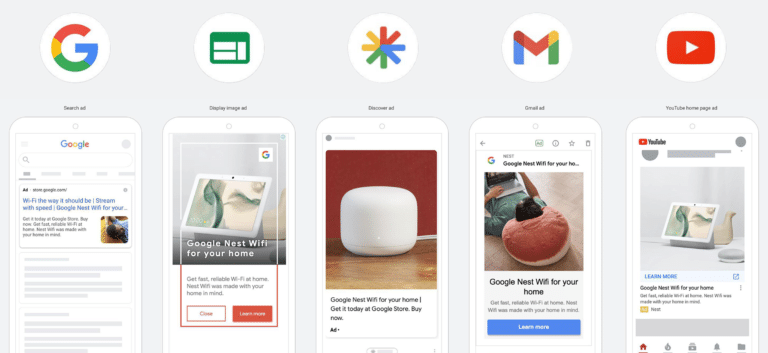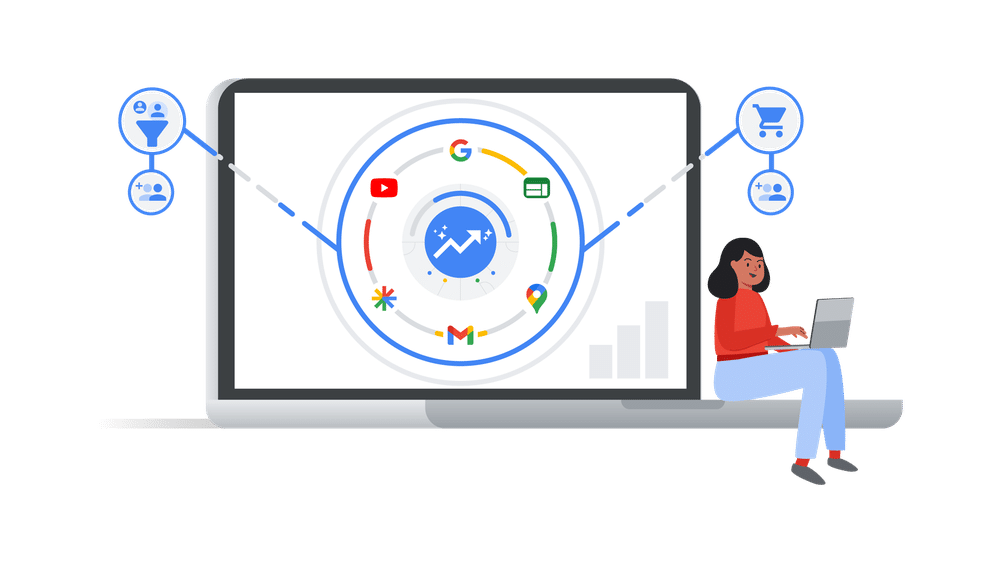Pushing advertising to the (P)MAX: How to best leverage Google Performance Max
By Greg Shickle, Head of Activation

Performance Max (PMAX) is a streamlined solution designed to consolidate ads across all Google products and platforms. PMAX combines automation technology with access to all Google property auction data to optimise machine learning.
A news agency client used PMAX to deliver a 20% improvement in registrations at a 31% reduction in cost per acquisition (CPA) compared to pay-per-click (PPC) approaches.
Why it matters
Automation will become increasingly vital to digital marketing. While Google may be the furthest ahead at this moment, it isn’t the only media owner on this journey. All the major platforms are at various stages of creating similar PMAX products.
Takeaways
- Audience Signals – exclusively available to PMAX – allows marketers to steer automation closer to marketing goals and utilise proprietary audience and demographic data intel.
- The more high-quality inputs, the better the performance and customer experience. For that reason, advertisers must contribute enough to the process for the automation to be effective.
- Brands should begin experimenting with the platform and taking some risks to find out what works and what doesn’t in order to reap the benefits later.
Today’s marketers face a dilemma. Unpredictable customer behaviours across a plethora of channels and devices are making it difficult to truly connect with and understand how to reach their customers effectively.
Enter Google’s Performance Max (PMAX) – a streamlined solution designed to consolidate ads across every Google channel, all in a single campaign. This fully automated campaign type requires advertisers to provide a goal (e.g. a cost per sale target), a bank of creative, audiences and insights. Google will then use machine learning to find the optimal combinations of creative, frequency, placement and position to deliver the highest number of goals for the lowest possible spend.

How does PMAX differ from existing PPC approaches?
The role of machine learning and how advertisers engage with its functionality is at the very core of running a successful Google Ads account. The difference with PMAX is that this campaign type combines the best of Google Ads’ automation technology and access to all Google property auction data to achieve optimal machine learning.
While automation has previously been closely synonymous with ‘lack of control’ for marketers, the introduction of Audience Signals – exclusively available to PMAX – allows marketers to steer automation closer to marketing goals and utilise proprietary audience and demographic data intel.
Its goal-orientated nature is where PMAX shines. Objective-formed campaigns have so much to offer advertisers looking to reach their audiences whilst increasing conversions and sales, which can help to maximise output. In fact, in our testing, we’ve found that head-to-head, PMAX beat PPC every time.
For an entertainment app client, for example, we had a plethora of live campaign formats driving app installs, optimised to within an inch of their lives. We believed there was nothing more to gain. In stepped PMAX. PMAX found profitable new volume in places we hadn’t seen before, driving 29% lower CPA vs paid search in areas where we had seemingly already maxed out.
However, marketers should be aware that PMAX should not be used alone, at least for now. Ideally, it should run in conjunction with your core campaigns because PMAX does not utilise keywords as search does. Instead, upgrade as you see results come in and scale it over time.
What does it mean for brands?
Simply put, PMAX might not be the finished product yet, but automation is the way the industry has been heading for some time. As Nicolas Darvea-Garneau, Google’s former Chief Search Evangelist, predicted in 2020: “All digital marketing will be 100% automated by 2025”. Whether we believe this statement to be completely accurate or not, the fact remains that PMAX is part of a bigger vision, and it’s only the start.
For brands, this means the work to master the tool and implement it correctly must start now. Begin experimenting with the platform and taking some risks to find out what works and what doesn’t in order to reap the benefits later.
As with all Google products, it’s led by some agencies or a subset of innovative clients. For example, autobidding and search. Those that tested it figured out the role of automation sooner, scaled it quickly, and went on to the next innovation. For the wider industry to fully adopt auto-bidding took around three years. The early adopters had done this in six months, whilst the rest of the market was catching up.
As such, Wavemaker has launched a dedicated unit to help clients embrace PMAX early. It has involved bringing together experts in creative, automation, predictive algorithms, measurement and first-party data alongside Google’s own team to test, master and scale the product to clients. Building a team that has the skills to manage this technology, that understands the importance of high-quality data, the role of creativity and can build insights around this will be essential moving forward.
This is because if you let Google handle 100% of the workload you’ll be disappointed, because automation cannot equal human input. The more high-quality inputs you feed in, the better the performance and customer experience. For that reason, you must contribute enough to the process for the automation to be effective. The automation will handle the grunt work, but you still have to take the time to ensure that you’ve given it valuable information and verify that it’s working properly.
Without this, ads generated by PMAX can represent a brand poorly. If it’s easily recognisable as auto-generated and not in-keeping with the rest of a brand’s assets, it can easily come off cheap and put consumers off. You need a team that is able to create purposeful creatives for PMAX and keep abreast of changes as campaign types will evolve.

PMAX proof points: A case study
Automation allows us to do things we simply couldn’t do before without huge investments of time and money. The opportunities are endless if you are able to implement it appropriately.
A great example of this in action is when Wavemaker used PMAX for one of the world’s largest news agencies. The campaign was a massive success, delivering a 20% improvement in registrations at a 31% reduction in CPA vs PPC. It did this by using the vast 10.4 million pages of news content to automatically generate campaigns across Google properties, precisely targeting prospects.
However, we found it was showing up queries based on archived web pages that were no longer relevant to the site or users. It’s proof that human input is still king when it comes to quality, and why robust testing is so crucial to maximising PMAX’s potential. Yet it also highlighted PMAX’s power. Humans are a key piece in the puzzle, but no human could efficiently handle the same level of output at scale – there was a drastic drop in volume and performance when we tried to dictate the URL ourselves.
In other words, with the sheer amount of touchpoints and content in today’s digital age, it’s inevitable that we’re heading in this direction of highly automated campaigns across multiple platforms. While Google arguably may be the furthest ahead at this precise moment, it isn’t the only company on this journey. All the major platforms are at various stages of creating similar PMAX products.
You must act now to create the structure and culture that can test, master and scale this approach for gains today, and to futureproof your advertising for tomorrow. Why wait? Push your advertising to the (P)Max.
Article originally published in WARC.










